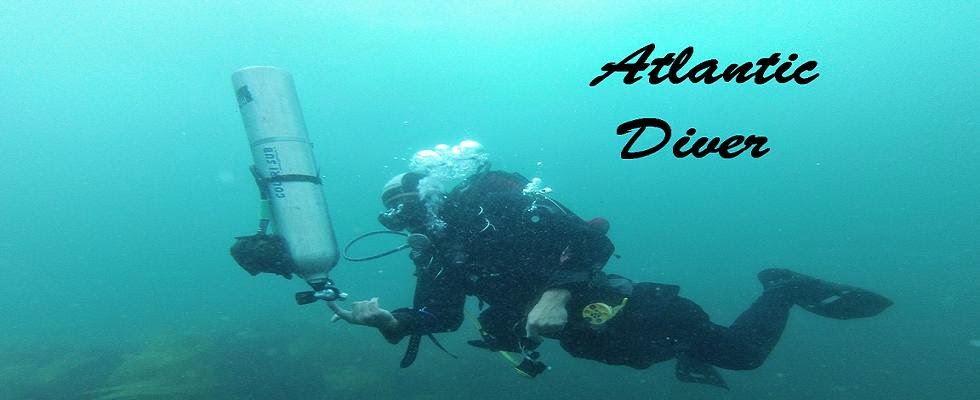The first real-world test of the
pole-knog tray + light has been done finally. Conditions were far
from optimal, so we can see how good it handles it´s function in low
visibility dives.
The test was conducted with the gopro 3
silver, recording at 1980x1020, 30 fps, medium view mode. The dive
site chosen was River Popa, the stern of a cargo ship that broke off
after it collided with the walls of cape Espichel, in Sesimbra,
Portugal, around 15 years ago. The average depth during the dive was
20 meters, with a bottom time of 35 minutes on air, and the
visibility was around 5-6 meters, with alot of suspension near the
bottom.
First of all, this tray setup, as
highlighted in the qudos instruction sheet, is not recommended for
scuba diving, as the closeness of the light source to the lens will
cause alot of backscatter ( basically it lights up suspension
particles in front of the lens, as we will see ), reducing the
quality of the shots. This first run confirms this, even shooting in
medium view. Knog recommends the qudos to be used in a dedicated dive
tray.
Fiddling loosely with the lights three
modes, we found that action mode, the brightest one, can be used to
light up large overhead enviroments, like caves, or the inside of the
ship´s hull. But even in it´s low settings, it causes either to
"burn in" the subject in the image ( like a fish ), or
light up backscatter in a panoramic shot. Perhaps this can be
mitigated if the light source is moved further away from the lens (
knog recommends 50 cm! ), but this set-up is about being practicle,
not optimal.
The second mode, spot mode, perhaps is
more usefull for macro or night diving, as the light beam only
illuminates a subject, and not the surroundings. As the beam is
narrower, it causes less backscatter.
The third mode, ambient mode, is what
perhaps seems to be the most usefull. The light intensity is just
right to shoot close subjects, and even some more distant shots, and
it´s a good compromise in relation to other modes, as it saves
battery and provides good overall lighting.
Battery life was as expected, lasting
the hole dive always on, sometimes in the maximum setting, but mostly
with the ambient light setting. By the end of the dive, the battery
indicator signaled low battery, but the light didn´t fade, and i
thought it could carry on a bit more. As a primary light source, i
can´t recommend it, as i think the user has to be conservative and
turn off the light after shooting, or it risks running out of battery
by the end of the dive. Anyway, the user will need to recharge or
replace the battery after every dive, or be extremely conservative on
it´s use. On the positive side, as it´s charged by usb, a power
bank might help in recharging the battery.
Perhaps Knog could provide a bigger
capacity battery on the future.
On the next time, we will change the
position of the qudos on the tray, placing it on the right side of
the tray, with a little hacking, to put it a bit more away from the
lens, in hope it will reduce backscatter.
Stay tuned.
Atlantic Diver








































